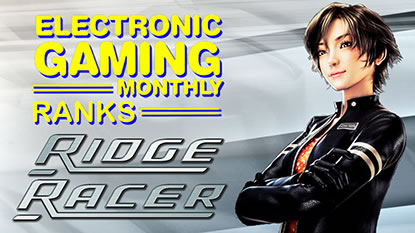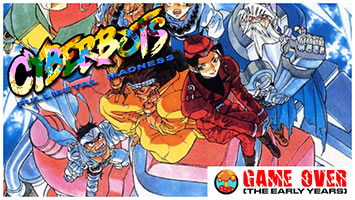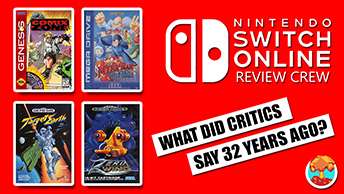- CLASSIC MAGAZINES
- REVIEW CREW
A show recapping what critics thought back
when classic games first came out! - NEXT GENERATION'S BEST & WORST
From the worst 1-star reviews to the best
5-stars can offer, this is Next Generation! - NINTENDO POWER (ARCHIVE)
Experience a variety of shows looking at the
often baffling history of Nintendo Power! - MAGAZINE RETROSPECTIVE
We're looking at the absolutely true history of
some of the most iconic game magazines ever! - SUPER PLAY'S TOP 600
The longest and most ambitious Super NES
countdown on the internet! - THEY SAID WHAT?
Debunking predictions and gossip found
in classic video game magazines! - NEXT GENERATION UNCOVERED
Cyril is back in this spin-off series, featuring the
cover critic review the art of Next Generation! - HARDCORE GAMER MAGAZING (PDF ISSUES)
Download all 36 issues of Hardcore Gamer
Magazine and relive the fun in PDF form!
- REVIEW CREW
- ELECTRONIC GAMING MONTHLY
- ELECTRONIC GAMING MONTHLY RANKS
From Mario to Sonic to Street Fighter, EGM
ranks classic game franchises and consoles! - ELECTRONIC GAMING MONTHLY BEST & WORST
Counting down EGM’s best and worst reviews
going year by year, from 1989 – 2009! - ELECTRONIC GAMING BEST & WORST AWARDS
11-part video series chronicling the ups and
downs of EGM’s Best & Worst Awards!
- ELECTRONIC GAMING MONTHLY RANKS
- GAME HISTORY
- GAME OVER: STORY BREAKDOWNS
Long-running series breaking down game
stories and analyzing their endings! - A BRIEF HISTORY OF GAMING w/ [NAME HERE]
Real history presented in a fun and pithy
format from a variety of game historians! - THE BLACK SHEEP
A series looking back at the black sheep
entries in popular game franchises! - INSTANT EXPERT
Everything you could possibly want to know
about a wide variety of gaming topics! - FREEZE FRAME
When something familiar happens in the games
industry, we're there to take a picture! - I'VE GOT YOUR NUMBER
Learn real video game history through a series
of number-themed episodes, starting at zero! - GREAT MOMENTS IN BAD ACTING
A joyous celebration of some of gaming's
absolute worst voice acting!
- GAME OVER: STORY BREAKDOWNS
- POPULAR SHOWS
- DG NEWS w/ LORNE RISELEY
Newsman Lorne Riseley hosts a regular
series looking at the hottest gaming news! - REVIEW REWIND
Cyril replays a game he reviewed 10+ years
ago to see if he got it right or wrong! - ON-RUNNING FEUDS
Defunct Games' longest-running show, with
editorials, observations and other fun oddities! - DEFUNCT GAMES QUIZ (ARCHIVE)
From online quizzes to game shows, we're
putting your video game knowledge to the test!- QUIZ: ONLINE PASS
Take a weekly quiz to see how well you know
the news and current gaming events! - QUIZ: KNOW THE GAME
One-on-one quiz show where contestants
find out if they actually know classic games! - QUIZ: THE LEADERBOARD
Can you guess the game based on the classic
review? Find out with The Leaderboard!
- QUIZ: ONLINE PASS
- DEFUNCT GAMES VS.
Cyril and the Defunct Games staff isn't afraid
to choose their favorite games and more! - CYRIL READS WORLDS OF POWER
Defunct Games recreates classic game
novelizations through the audio book format!
- DG NEWS w/ LORNE RISELEY
- COMEDY
- GAME EXPECTANCY
How long will your favorite hero live? We crunch
the numbers in this series about dying! - VIDEO GAME ADVICE
Famous game characters answer real personal
advice questions with a humorous slant! - FAKE GAMES: GUERILLA SCRAPBOOK
A long-running series about fake games and
the people who love them (covers included)! - WORST GAME EVER
A contest that attempts to create the worst
video game ever made, complete with covers! - LEVEL 1 STORIES
Literature based on the first stages of some
of your favorite classic video games! - THE COVER CRITIC
One of Defunct Games' earliest shows, Cover
Critic digs up some of the worst box art ever! - COMMERCIAL BREAK
Take a trip through some of the best and
worst video game advertisements of all time! - COMIC BOOK MODS
You've never seen comics like this before.
A curious mix of rewritten video game comics!
- GAME EXPECTANCY
- SERIES ARCHIVE
- NINTENDO SWITCH ONLINE ARCHIVE
A regularly-updated list of every Nintendo
Switch Online release, plus links to review! - PLAYSTATION PLUS CLASSIC ARCHIVE
A comprehensive list of every PlayStation
Plus classic release, including links! - RETRO-BIT PUBLISHING ARCHIVE
A regularly-updated list of every Retro-Bit
game released! - REVIEW MARATHONS w/ ADAM WALLACE
Join critic Adam Wallace as he takes us on a
classic review marathon with different themes!- DEFUNCT GAMES GOLF CLUB
Adam Wallace takes to the links to slice his way
through 72 classic golf game reviews! - 007 IN PIXELS
Adam Wallace takes on the world's greatest spy
as he reviews 15 weeks of James Bond games! - A SALUTE TO VAMPIRES
Adam Wallace is sinking his teeth into a series
covering Castlevania, BloodRayne and more! - CAPCOM'S CURSE
Adam Wallace is celebrating 13 days of Halloween
with a line-up of Capcom's scariest games! - THE FALL OF SUPERMAN
Adam Wallace is a man of steel for playing
some of the absolute worst Superman games! - THE 31 GAMES OF HALLOWEEN
Adam Wallace spends every day of October afraid
as he reviews some of the scariest games ever! - 12 WEEKS OF STAR TREK
Adam Wallace boldly goes where no critic has
gone before in this Star Trek marathon!
- DEFUNCT GAMES GOLF CLUB
- DAYS OF CHRISTMAS (ARCHIVE)
Annual holiday series with themed-episodes
that date all the way back to 2001!- 2015: 30 Ridiculous Retro Rumors
- 2014: 29 Magazines of Christmas
- 2013: 29 Questionable Power-Ups of Christmas
- 2012: 34 Theme Songs of Christmas
- 2011: 32 Game Endings of Christmas
- 2010: 31 Bonus Levels of Christmas
- 2009: 30 Genres of Christmas
- 2008: 29 Controls of Christmas
- 2007: 34 Cliches of Christmas
- 2006: 33 Consoles of Christmas
- 2005: 32 Articles of Christmas
- 2004: 31 Websites of Christmas
- 2003: 29 Issues of Christmas
- 2002: 28 Years of Christmas
- 2001: 33 Days of Christmas
- NINTENDO SWITCH ONLINE ARCHIVE
- REVIEW ARCHIVE
- FULL ARCHIVE
Fact Checking RetroforceGO! Part 1
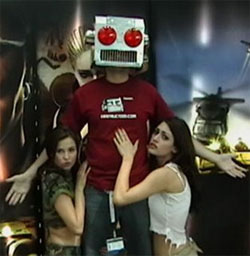
If this is the first thing you think of when I say the name "Destructoid" then it looks like their plan is working!
Unfortunately RetroforceGO! has a tendency
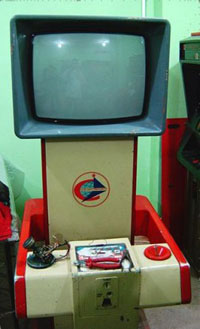
Okay, maybe the RetroforceGO! kids aren't going to go THIS old school!
There's just one problem, RetroforceGO! is constantly getting the facts wrong, so much so that Defunct Games has decided to fact check some of these podcasts and give you the right information. That way you can sit back and enjoy listening to a podcast about retro games and not go around giving out false information. We can't do anything about the non-stop profanity, but when it comes to clearing up misinformation Defunct Games should be your number 1 stop. So get comfortable and scroll down to watch Defunct Games fact check the RetroforceGO! podcast.
Quote 1:
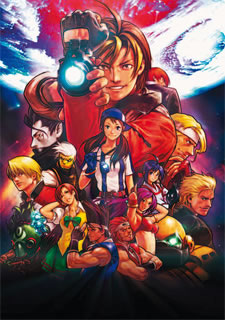
Neo Geo game that combines everybody's favorite SNK characters? I would have also accepted Neo Geo Battle Coliseum!
"Now, let me ask you guys. Cause kind of all of the Neo Geo fighters sort of blend together in my memory. There's like World Heroes, right? Then there's King of Fighters. Then there's Art of Fighting. And no, Fatal Fury. And also isn't there Art of Fighting, or is that a Fatal Fury ... Anyway, so all I know is that I think there's one of them that is a mixture of all of them, is that this one?" "No, I don't think it is."
Reality:
The reality is that for those who don't play a lot of fighting games it can be a tricky road keeping all of the different SNK fighters straight. As they said on RetroforceGO!, there's Fatal Fury, Art of Fighting, World Heroes, and The King of Fighters. And they're completely forgetting about fan favorites like Samurai Shodown, The Last Blade and Waku Waku 7. For those with only a passing interest in the genre it's easy to understand how they could get all of these titles confused. But if you're doing a podcast and you know what the theme is, there's no excuse for you to make such a simple error. Even without the aid of Wikipedia, it would have taken the hosts no more than a minute to search and find the answer.
In case you're just as baffled as they are, The King of Fighters is indeed the fighting game that is a "mixture" of all of SNK's most popular fighters. The version they are referring to, The Kind of Fighters '94, was the first incarnation of the series. It not only featured characters from Art of Fighting and Fatal Fury, but it also offered them in teams named after their game. To make matters worse, one of the panelists asked if the game featured Terry Bogart (one of the main characters in both Fatal Fury and The King of the Fighters), only to be told that he wasn't part of this game. Either these podcasters aren't very observant or they didn't actually play the game that they are recommending, either way it certainly looks bad when you run a retro podcast and don't even know what The King of Fighters is.
In case you're just as baffled as they are, The King of Fighters is indeed the fighting game that is a "mixture" of all of SNK's most popular fighters. The version they are referring to, The Kind of Fighters '94, was the first incarnation of the series. It not only featured characters from Art of Fighting and Fatal Fury, but it also offered them in teams named after their game. To make matters worse, one of the panelists asked if the game featured Terry Bogart (one of the main characters in both Fatal Fury and The King of the Fighters), only to be told that he wasn't part of this game. Either these podcasters aren't very observant or they didn't actually play the game that they are recommending, either way it certainly looks bad when you run a retro podcast and don't even know what The King of Fighters is.
Quote 2:
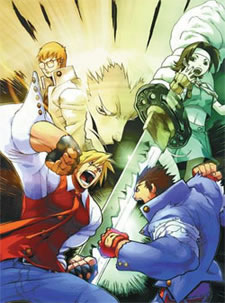
Now that Capcom is bringing back Bionic Commando, Street Fighter and 1942, I can only hope that Rival School is on their short list!
"And I found a copy of Project Justice for the Dreamcast. Yeah, it's the sequel to Rival Schools, the one for Dreamcast. It also came out for PS2, I think, but it wasn't as good and it was crappy and I think it might have been released here. I'm not sure if it was or not. But the Japanese one is where it's at."
Reality:
Actually, Project Justice was not released on the PlayStation 2. While there was a PlayStation version of the original game (as well as an expansion pack-like disc), Capcom (the makers of both Rival Schools United By Fate and Project Justice) did not port this sequel to the PlayStation 2. And since we've established that the first part of his statement is wrong, we can also debunk the idea that it was released in the U.S. It wasn't.
More importantly, I think we can effectively brush off the notion that this fictional PlayStation 2 version was somehow inferior to the Dreamcast game. Look, I won't lie to you, I have a great deal of affection for the Dreamcast and there are a lot of games that I would rather play on Sega's final console than Sony's PlayStation 2. But as great as the Dreamcast is, there's no reason to disparage a game you clearly haven't played. There's no way the PlayStation 2 version could be "crappy", it didn't exist. The only thing crappy about this situation is the fact that it DIDN'T come out on the PlayStation 2, because maybe if it did more people would have discovered this gem and Capcom would still be making Rival School sequels.
More importantly, I think we can effectively brush off the notion that this fictional PlayStation 2 version was somehow inferior to the Dreamcast game. Look, I won't lie to you, I have a great deal of affection for the Dreamcast and there are a lot of games that I would rather play on Sega's final console than Sony's PlayStation 2. But as great as the Dreamcast is, there's no reason to disparage a game you clearly haven't played. There's no way the PlayStation 2 version could be "crappy", it didn't exist. The only thing crappy about this situation is the fact that it DIDN'T come out on the PlayStation 2, because maybe if it did more people would have discovered this gem and Capcom would still be making Rival School sequels.
Quote 3:
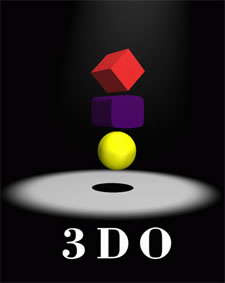
While 3DO had its fair share of problems, it always had a unique logo that stood out from the crowd!
"They actually made two 3DO's, didn't they? They hand like a 3DO 2. Like the M2 or something like that. If it was a movie it would be called Box Office Failure."
Reality:
Okay, RetroforceGO! isn't actually wrong about this information. Unlike the rest of the statements found in this article, this 3DO-related comment is full of nuance and requires some historical context. First and foremost, there technically was a second 3DO called the M2, the technology was created, sold and ready to be turned into a killer next generation console that could take on the likes of the Dreamcast. But this product, which was developed by 3DO back in the mid-1990s, never actually saw the light of day. Sold to Matsushiba (known internationally as Panasonic) for $100 million dollars, the M2 was set to be a real contender in the video game arena. But for whatever reason (be it competition, money issues, etc.) the M2 just couldn't make it to the retail space. The games that were developed for the console (including D2 by Warp) were moved to other platforms and the technology ended up finding its way into plenty of non-game related products (including medicine, architecture and sales technology).
So yes, they did make two 3DO's ... but only one of them actually came out. What was completely left out of this discussion about the 3DO was the most obvious topic, the fact that multiple companies made competing versions of the hardware. You would think that with all this talk about a one-console future it would have made sense to talk about a company that actually tried something similar on a smaller scale.
So yes, they did make two 3DO's ... but only one of them actually came out. What was completely left out of this discussion about the 3DO was the most obvious topic, the fact that multiple companies made competing versions of the hardware. You would think that with all this talk about a one-console future it would have made sense to talk about a company that actually tried something similar on a smaller scale.
Quote 4:
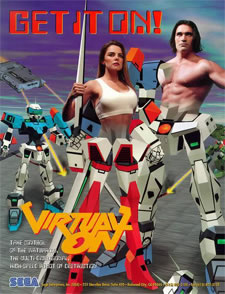
No, not this Sega advertisement!
"Yeah, well, I mean, I hate to say it but in a way it could be ... yeah, [the "Sega Does What Nintendon't" advertisement] did work. And I think that maybe an alternative was needed at that time. Y'know, because it did seem like [Nintendo was for kids] mostly. Wow, you know what? God, though, if you think about it guys, let's see, what was time period of the Genesis that that campaign came out? Is that right? Because, if you think about it, at that time Nintendo probably had the most varied selection of games. Like, I mean, Chrono Trigger and, you know, all those RPGs that we love came out and that stuff. They had fighters and they had role-playing games and they had everything you could basically think of they had."
Reality:
On the surface this quote actually sounds about right. Colette Bennett (the only woman on the podcast) suggests that the "Sega Does What Nintendon't" advertisements were done during the Sega Genesis era, which is 100% true. The problem is that her timeline isn't accounting for a huge gap between some of the things she's talking about. For starters, the advertisement in question was one of Sega's earliest magazine commercials, used to spread the word of the Sega Genesis
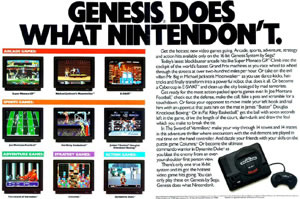
Yes, this is the silly advertisement from 1989 that everybody is talking about!
right when the console was released. It featured games like Michael Jackson's Moonwalker, Super Monaco GP, Columns and E-SWAT ... all games that were released in and around 1989. This commercial wasn't attacking the Super NES; it's talking about the 8-bit NES. And Sega is right, at that moment in time Sega was able to claim that they were doing something that Nintendo wasn't.
But that's not the timeline Colette uses when talking about Sega and this silly advertisement. She suggests that this commercial was used at a time when the Super NES had games like Chrono Trigger, Final Fantasy III and Street Fighter II. But that's just not the case, Chrono Trigger was released a full seven years after this advertisement was published. Even Street Fighter II came out three years after this commercial, so it's completely disingenuous to suggest that Sega was somehow wrong to label themselves as the "hardcore" unit of choice. They were hardcore, if only because they were one of the first to release a 16-bit console.

Yes, this is the silly advertisement from 1989 that everybody is talking about!
But that's not the timeline Colette uses when talking about Sega and this silly advertisement. She suggests that this commercial was used at a time when the Super NES had games like Chrono Trigger, Final Fantasy III and Street Fighter II. But that's just not the case, Chrono Trigger was released a full seven years after this advertisement was published. Even Street Fighter II came out three years after this commercial, so it's completely disingenuous to suggest that Sega was somehow wrong to label themselves as the "hardcore" unit of choice. They were hardcore, if only because they were one of the first to release a 16-bit console.
Quote 5:
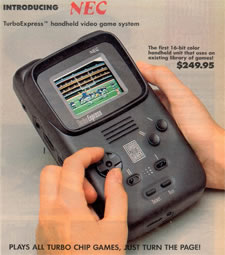
The hand model is clearly a game play, why else would she be trying to unscrew the D-pad?
"They had a lot of hype for all the old handhelds, like do you remember the TurboDuo? Like the TurboGrafx-16 one. That thing was so expensive."
Reality:
Honestly, if you're going to talk about portable consoles you really should know the difference between the TurboDuo and the TurboExpress. For those that don't know, the TurboDuo was a TurboGrafx-16 hardware revision that combined the card unit and the CD-ROM in one sleek unit. The TurboExpress, on the other hand, was a portable console that allowed you to play your TurboGrafx-16 games (which came on credit card-sized HuCards) on the go. Regardless of the fact that both of these systems play the same games, there really is a world of difference between the ultra-expensive TurboExpress and the TurboDuo. To be fair, this is a simple mistake ... but I still say that when you're going to talk about retro portables you should do a little research before it comes up. Or maybe have some people around that would know the difference between the TurboDuo and TurboExpress. I'm just saying.
(EDITOR'S NOTE: When we posted this article we unfairly insinuated that RetroforceGo! couldn't tell the difference between the TurboDuo and the TurboExpress. While the above quote still stands, what mentioned is that this error was corrected several minutes later. The team did not catch the mistake when it was said and thus was confused about the difference between the two ... however, they did eventually correct the error. Defunct Games should have mentioned this when we original ran the article, we owe Destructoid and RetroforceGo! an apology. In the future we will make sure and only focus on errors that they did not rectify in that episode.)
(EDITOR'S NOTE: When we posted this article we unfairly insinuated that RetroforceGo! couldn't tell the difference between the TurboDuo and the TurboExpress. While the above quote still stands, what mentioned is that this error was corrected several minutes later. The team did not catch the mistake when it was said and thus was confused about the difference between the two ... however, they did eventually correct the error. Defunct Games should have mentioned this when we original ran the article, we owe Destructoid and RetroforceGo! an apology. In the future we will make sure and only focus on errors that they did not rectify in that episode.)
HOME |
CONTACT |
NOW HIRING |
WHAT IS DEFUNCT GAMES? |
NINTENDO SWITCH ONLINE |
RETRO-BIT PUBLISHING
Retro-Bit |
Switch Planet |
The Halcyon Show |
Same Name, Different Game |
Dragnix |
Press the Buttons
Game Zone Online | Hardcore Gamer | The Dreamcast Junkyard | Video Game Blogger
Dr Strife | Games For Lunch | Mondo Cool Cast | Boxed Pixels | Sega CD Universe | Gaming Trend
Game Zone Online | Hardcore Gamer | The Dreamcast Junkyard | Video Game Blogger
Dr Strife | Games For Lunch | Mondo Cool Cast | Boxed Pixels | Sega CD Universe | Gaming Trend
Copyright © 2001-2025 Defunct Games
All rights reserved. All trademarks are properties of their respective owners.
All rights reserved. All trademarks are properties of their respective owners.













